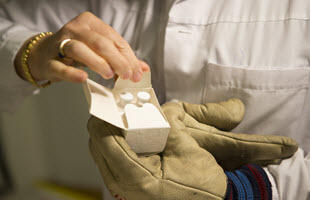Tales from The City, the Behavioral Science Summit
 Cities – all cities, not just individual ones – often get an underlying bad rap. Despite the charms of any specific locale, urban areas get tagged with images of crime and grime, even when those images don’t represent the statistical reality of the urban area.
Cities – all cities, not just individual ones – often get an underlying bad rap. Despite the charms of any specific locale, urban areas get tagged with images of crime and grime, even when those images don’t represent the statistical reality of the urban area.
“I regard the growth of cities as an evil thing,” opined Mahatma Gandhi, “unfortunate for mankind and the world.”
That quote, drawn from a larger rant about the cities’ siren song on villagers, opened a recent presentation by Ed Glaeser, the Harvard economist and author of the 2011 book Triumph of the City.
Triumph?
Apart from Glaeser’s own thesis, that cities are humankind’s greatest invention, and that they make us “richer, smarter, greener, healthier, and happier,” humankind itself is confirming that victory with its feet (or at least its procreation). More than half of the world’s population lives in cities now; by 2050, that figure will be two thirds.
It may take a village, but that village is in a city.
As John Dilmoth, the United Nation’s population guru, has said, “Managing urban areas has become one of the most important development challenges of the 21st century.” Or as interpreted by Glaeser, “There’s a reason New Yorkers like government more than Montanans do — they need it more.”
That mix of the miserable and the celebratory marked the event where Glaeser spoke. The 2014 Behavioral and Social Science Summit cosponsored by Stanford University’s Center for Advanced Study in the Behavioral Sciences and the Social Science Research Council (both Social Science Space partners) was themed “The City.” It brought a heady mix of academics, entrepreneurs and policymakers, onstage and off, to discuss the current state of the city and more importantly, where good scholarship and wise stewardship can take urban areas.
It was a day too of hard truths in areas like education, poverty, diversity and climate change. For example, addressing the ecologically aware (and low density) enclaves surrounding the summit site in California’s Bay Area, Glaeser suggested that by regulating ugly industrial processes to outside the region the green pioneers were mostly just outsourcing the mess and creating larger global problems. Every piece of the city, said Columbia sociologist Saskia Sassen in a slightly different context, should be working. (Also worth noting was historian Margaret O’Mara observation that Detroit, circa 1928, was much like Silicon Valley, circa 2014.)
Time, as that suggest, will not heal these urban wounds. As USC sociologist Manuel Pastor related during his talk on the realities of demographics in the U.S., “There’s an immediate need to think long term.”
But such truths don’t always make it to the bully pulpits of politics. “Politicians,” Glaeser said, “can be counted on to say the popular things without our help.” For this crowd, an even harder truth was offered by Pedro Noguera, one of the day’s two keynote speakers: “It takes more than a good research paper to influence Congress or even a city council.”
Noguera, the Peter L. Agnew Professor of Education at New York University, received the second annual SAGE-CASBS Award at the summit. He’s shown below being interviewed by SAGE founder Sara Miller McCune, a talk in which he suggests that speaking to the broader public – with scholarship in hand – through, say, an op-ed in a newspaper like the New York Times or Wall Street Journal, its currency and splash is greater than a white paper making the same points.
Similar fears of crying out in the desert were expressed by other speakers at the summit, such as Eric Klinenberg, a sociologist at NYU who pointed out how ill-equipped cities were in dealing with the impacts of climate change. It’s not just sea-level rise, either – he noted the post-crisis response from the city of Chicago to a killer heat wave was to issue a mealy-mouthed report, complete with a snowflake on the cover. (And his co-panelist, University of Pennsylvania architecture professor Marion Weiss, showed how at least in the built environment, there are solutions or at least adaptations possible.)
But the summit’s real voice in the desert was that of Tony Hsieh – not a professor or a policymaker. Hsieh is the founder of the colossally successful online clothing site Zappos.com. And while he did mention Zappos – did you know the No. 1 request from employees when it moved into its current digs was for doggie day care – he wasn’t here to shill his shoes. Instead, he outlined the theory of collision that guides that office and that permeates his personally funded redevelopment experiment in an overlooked (but hip) corner of town.
Hsieh reviewed the retailer’s move to Las Vegas, and how in imagining that workspace Zappos aimed to turn one of the perceived negatives of city living, the crush of humanity, into a positive: a greater number of creative collisions. These collisions – the interactions of two people to synthesize an unexpected positive – were a driving force in the new headquarters’ design; he talked about measuring collisions per square foot over a year. Hsieh described how Zappos closed off an existing skybridge from parking area to offices specifically to push employees into having collisions with surrounding neighborhoods. (He would not, however, be drawn into criticizing Twitter for opening a skybridge to essentially prevent that very thing.)
His urban renewal project also focuses on interaction. The Downtown Project describes itself thusly:
Our goal and purpose is to help make downtown Vegas a place of Inspiration, Entrepreneurial Energy, Creativity, Innovation, Upward Mobility, and Discovery, through the 3 C’s of Collisions, Co-learning, and Connectedness in a long-term, sustainable way.
The project has received some fawning press, although recent headlines have focused on layoffs and closures: “Zappos Chief Loses a Las Vegas Bet.” Nor was his professorial audience wasn’t sold on his charismatic vision – where are the old people? What role does government play? – they did seem intrigued with watching a real-time experiment that aimed to rewrite some of the cities’ age old bad rap.




























































































